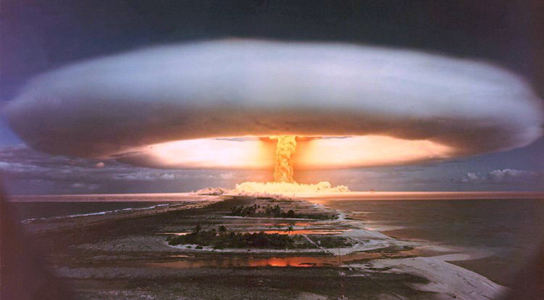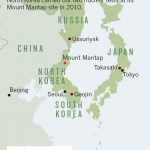Radioactive Isotopes Hint At North Korean Nuclear Tests
February 3, 2012

While it’s far from conclusive, an analysis of radioisotope data indicates that North Korea may have conducted two nuclear weapons tests in 2010. The claim has drawn some skepticism from nuclear weapons experts, but if this is confirmed, it would double the number of tests the country has conducted and infer that North Korea is trying to develop warheads for its nuclear arsenal.
 The North Korean state news agency claimed back in May 2010 that the country had achieved nuclear fission, which was blatantly ridiculed in the Western media. However, some nuclear experts didn’t dismiss the news offhand. South Korean scientists detected whiffs of radioactive xenon around that time, which could imply that North Korea further tested some devices.
The North Korean state news agency claimed back in May 2010 that the country had achieved nuclear fission, which was blatantly ridiculed in the Western media. However, some nuclear experts didn’t dismiss the news offhand. South Korean scientists detected whiffs of radioactive xenon around that time, which could imply that North Korea further tested some devices.Lars-Erik De Geer, an atmospheric scientist at the Swedish Defense Research Agency in Stockholm, examined the monitoring data from Russian and Japanese stations close to North Korea. They came up with some unexplainable facts. De Geer took another look at the data and compared them to news reports and meteorological records. A year later, he has concluded that North Korea carried out two small nuclear tests in April and May 2010, in the range of 50 to 200 tons of TNT.
The types of tests that North Korean scientists performed are designed to boost the yield of its weapons. De Geer’s paper will be published in the April/May issue of the journal Science and Global Security. Ratios of xenon-133 and xenon-133m, a higher-energy, metastable form of the isotope, point towards an explosion in mid-April. The shorter-lived isotopes, barium-140 and lanthanum-140, point to a second test around May 11th.
The xenon isotope ratios also indicate that North Korea’s program with fast nuclear reactions is based on uranium, not plutonium. De Geer believes that North Korea has performed the first steps of building a tritium-boosted weapon.
Other scientists remain skeptical, as there is a lack of any seismic vibrations to support the radioisotope data.
No comments:
Post a Comment